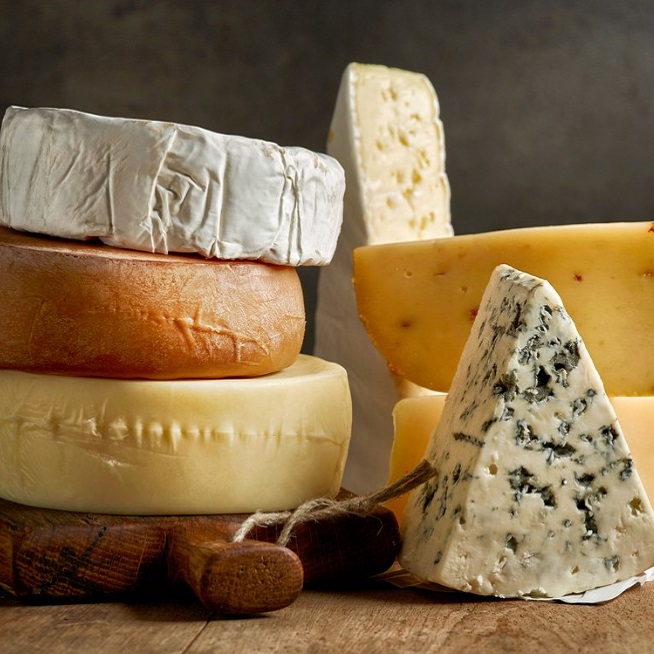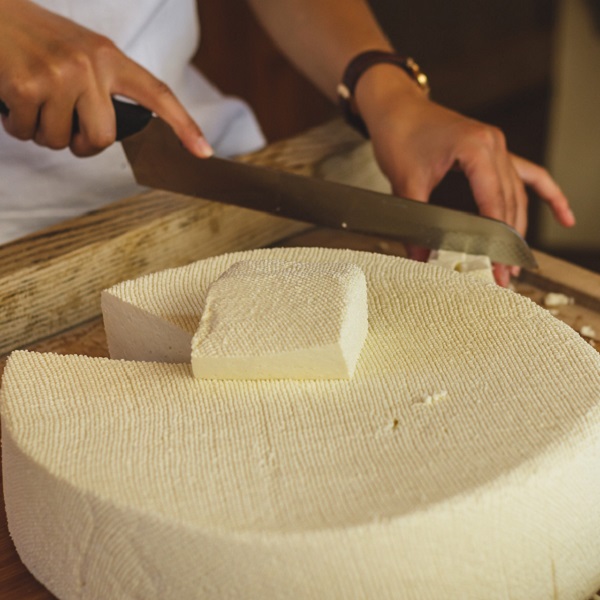Cheese: it’s a culinary staple, a comfort food, and a source of endless variety. But have you ever wondered what exactly goes into making this beloved dairy product? Let’s dive into the fascinating world of cheesemaking and uncover the key ingredients that transform milk into a delectable treat.
The Essential Ingredient: Milk – The Foundation of Cheese
At its core, cheese starts with one simple ingredient: milk. However, the type of milk can vary widely, resulting in a diverse range of cheese flavors and textures.
- Cow’s Milk: The most common milk used for cheesemaking, known for its balanced fat and protein content.
- Goat’s Milk: Produces a tangy and slightly earthy cheese with a distinctive flavor profile.
- Sheep’s Milk: Results in richer, creamier cheeses with a complex flavor.
- Buffalo Milk: Used to make mozzarella di bufala, prized for its delicate texture and sweetness.
Beyond Milk: Additional Key Ingredients
While milk is the star of the show, other essential components contribute to the cheesemaking process:
Starter Cultures
These are bacteria that convert milk sugars into lactic acid, initiating the cheesemaking process and influencing flavor development.
Rennet
This enzyme coagulates the milk, separating it into solid curds (which become cheese) and liquid whey.
Salt
Added for flavor, preservation, and texture control.
Other Ingredients (Optional)
Depending on the type of cheese, additional ingredients like herbs, spices, mold, or even wine can be added for unique flavors and characteristics.
The Cheesemaking Process: A Transformation in Stages
Cheesemaking involves several key steps that transform milk into a finished product:
- Acidification: Starter cultures are added to the milk, lowering its pH and creating an acidic environment.
- Coagulation: Rennet is added, causing the milk proteins to clump together and form curds.
- Cutting: The curds are cut into smaller pieces, releasing whey.
- Heating: The curds are gently heated to further expel whey and promote firmness.
- Salting: Salt is added for flavor and preservation.
- Shaping: The curds are molded or pressed into the desired shape.
- Aging (Optional): Many cheeses are aged for varying periods, allowing flavors to develop and textures to change.
From Curds to Connoisseur: The World of Cheese Varieties
The combination of different milk types, starter cultures, rennet, and other ingredients, along with variations in the cheesemaking process, results in a vast array of cheese varieties. Here are just a few examples:
- Fresh Cheeses: These are unripened cheeses with a soft, mild flavor, such as ricotta, mozzarella, and feta.
- Soft-Ripened Cheeses: These cheeses have a bloomy rind and creamy interior, like Brie and Camembert.
- Semi-Hard Cheeses: These include popular varieties like Gouda, Cheddar, and Gruyère, known for their versatility.
- Hard Cheeses: Aged for longer periods, these cheeses have a firm texture and complex flavor, such as Parmesan and Pecorino Romano.
- Blue Cheeses: These cheeses are inoculated with mold cultures, resulting in their characteristic blue veins and pungent flavor.
Beyond the Basics: Exploring Regional Cheeses
Cheesemaking is a global tradition, and each region has its own unique cheeses that reflect local culture, climate, and culinary traditions.
- France: Famous for its Brie, Camembert, Roquefort, and countless other varieties.
- Italy: Home to Parmesan, Mozzarella, Gorgonzola, and many more.
- Spain: Known for Manchego, Cabrales, and other flavorful cheeses.
- Switzerland: Produces Gruyère, Emmental, and other iconic Alpine cheeses.
Cheese and Health: A Nutritional Powerhouse
Besides being delicious, cheese offers several nutritional benefits:
- Protein: Essential for building and repairing tissues.
- Calcium: Important for strong bones and teeth.
- Vitamins: Contains vitamins A, B12, and D.
- Minerals: Provides zinc, phosphorus, and selenium.
However, cheese is also high in fat and calories, so moderation is key.
Cheesemaking is a fascinating blend of art and science. It’s a process that has been refined over centuries, resulting in a wide range of flavors, textures, and styles that tantalize our taste buds. Whether you’re a cheese aficionado or simply enjoy a good grilled cheese sandwich, understanding the ingredients and process behind your favorite cheeses can deepen your appreciation for this culinary treasure.
The Science Behind Cheesemaking: A Symphony of Transformations
Cheesemaking isn’t just a culinary art; it’s a fascinating scientific process. Let’s delve into the key chemical and biological reactions that occur during cheese production.
- Lactic Acid Fermentation: Starter cultures, a carefully selected blend of bacteria, convert lactose (milk sugar) into lactic acid. This not only lowers the pH of the milk but also contributes to the development of unique flavors and aromas.
- Coagulation and Syneresis: Rennet, an enzyme derived from animal stomachs or produced through microbial fermentation, triggers the coagulation of casein proteins in milk. This forms a gel-like network that traps fat and other milk solids, creating the curds. Syneresis, the process of whey expulsion, further solidifies the curds.
- Proteolysis and Lipolysis: During aging, enzymes break down proteins and fats within the cheese, resulting in a wide range of flavors and textures. Proteolysis, the breakdown of proteins, contributes to the development of savory, umami flavors, while lipolysis, the breakdown of fats, releases fatty acids that can impart fruity, buttery, or even spicy notes.
Cheesemaking Tools and Equipment: A Craftsman’s Arsenal
Cheesemaking doesn’t require a fancy laboratory, but a few essential tools and equipment make the process easier and more efficient:
- Cheese Vat: A large stainless steel container where milk is heated and processed.
- Curd Knife: Used to cut the curds into smaller pieces.
- Curd Scoop: Used to transfer curds from the vat to molds or draining trays.
- Cheese Molds: Used to shape the cheese into various forms.
- Cheese Press: Applies pressure to the curds to expel whey and create a firmer texture.
- Ripening Room: A controlled environment for aging cheese.
- Thermometer: Used to monitor the temperature of the milk and curds throughout the cheesemaking process.
Cheese and Food Safety: Enjoying Cheese Responsibly
While cheese is a delicious and nutritious food, it’s important to handle and store it properly to ensure its safety.
- Pasteurization: Most commercial cheese is made from pasteurized milk, which kills harmful bacteria.
- Storage: Keep cheese refrigerated to prevent spoilage.
- Handling: Wash your hands before and after handling cheese to avoid cross-contamination.
- Pregnant Women: Pregnant women should avoid unpasteurized (raw milk) cheeses, as they may contain harmful bacteria.
Exploring the World of Cheese: Beyond the Supermarket Shelf
While your local grocery store offers a decent selection of cheeses, don’t be afraid to venture beyond the familiar. Specialty cheese shops, farmers markets, and online retailers offer a world of exciting and unique cheeses to discover.
- Artisan Cheeses: These are crafted in small batches using traditional methods, often resulting in exceptional flavors and textures.
- Raw Milk Cheeses: Made from unpasteurized milk, these cheeses offer a unique taste and complexity.
- Regional Specialties: Explore cheeses from different regions around the world, each with its own distinct character.
Cheese Pairing: Elevate Your Culinary Experience
It can be enjoyed on its own, but it also pairs beautifully with a variety of foods and beverages.
- Wine and Cheese: Classic pairings include red wine with hard cheeses and white wine with soft cheeses.
- Fruit and Cheese: The sweetness of fruits complements the savory flavors of cheese.
- Bread and Crackers: A simple yet satisfying combination.
- Nuts and Dried Fruits: These provide textural contrast and complementary flavors.
The Joy of Cheese: A Celebration of Flavor
It is more than just food. It’s a celebration of culture, tradition, and culinary creativity. Whether you savor a creamy Brie, a sharp Cheddar, or a pungent blue cheese, every bite is a journey of flavor and discovery.
So go ahead, explore the world of cheese. Experiment with different varieties, try new pairings, and savor the rich tapestry of flavors that this remarkable dairy product has to offer.



